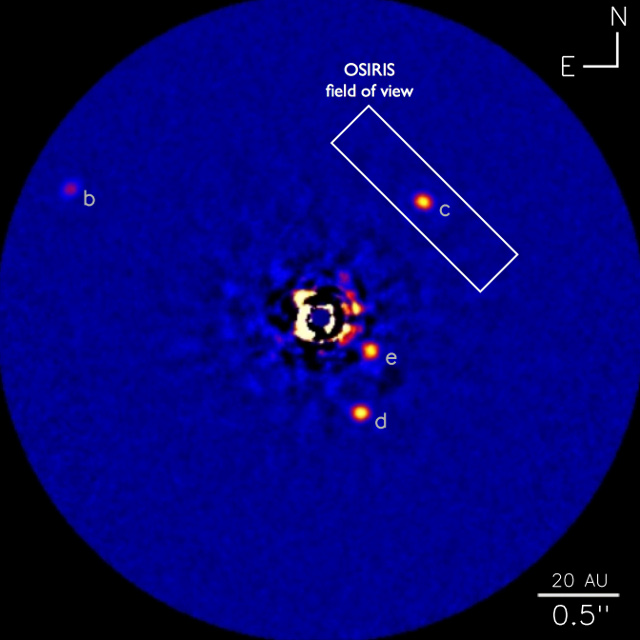Atmospheric analysis reveals an exoplanet that’s as alien as can be
Ars Technica » Scientific Method 2013-03-14

The star system HR 8799 is a sort of Solar System on steroids: a beefier star, four possible planets that are much bigger than Jupiter, and signs of asteroids and cometary bodies, all spread over a bigger region. Additionally, the whole system is younger and hotter, making it one of only a few cases where astronomers can image the planets themselves. However, HR 8799 is very different from our Solar System, as astronomers are realizing thanks to two detailed studies released this week.
The first study was an overview of the four exoplanet candidates, covered by John Timmer. The second set of observations focused on one of the four planet candidates, HR 8799c. Quinn Konopacky, Travis Barman, Bruce Macintosh, and Christian Marois performed a detailed spectral analysis of the atmosphere of the possible exoplanet. They compared their findings to the known properties of a brown dwarf and concluded that they don't match—it is indeed a young planet. Chemical differences between HR 8799c and its host star led the researchers to conclude the system likely formed in the same way the Solar System did.
The HR 8799 system was one of the first where direct imaging of the exoplanets was possible; in most cases, the evidence for a planet's presence is indirect. (See the Ars overview of exoplanet science for more.) This serendipity is possible for two major reasons: the system is very young, and the planet candidates orbit far from their host star.
Read 8 remaining paragraphs | Comments